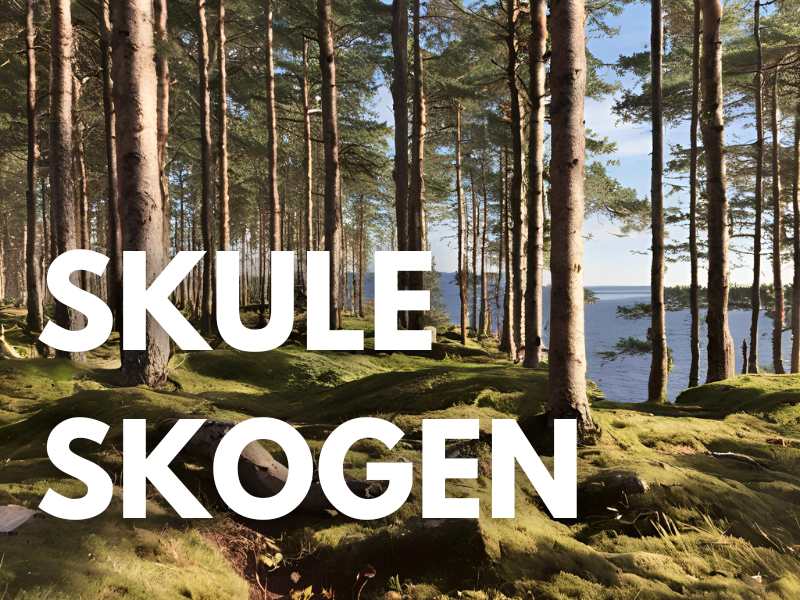Skuleskogen National Park is one of Sweden’s most spectacular national parks, located along the High Coast in Ångermanland. The park covers an area of approximately 30 square kilometers and is known for its dramatic landscapes, deep forests, and unique geological formations. Skuleskogen offers visitors a chance to experience an untouched natural environment and is an important part of the High Coast World Heritage Site.

Geology and Landscape
Skuleskogen National Park is particularly renowned for its geological formations, which have been shaped over thousands of years. The area is part of the High Coast, where post-glacial land uplift has been extremely high. This uplift has created a unique environment with steep cliffs, deep ravines, and extensive stone fields. One of the park’s most famous geological features is the Slåttdalsskrevan, a deep cleft in the mountain that stretches 200 meters and is 30 meters deep. Visitors can hike through the cleft and experience the impressive rock walls up close.
Flora and Fauna
The flora in Skuleskogen National Park is rich and varied, with a mix of boreal and southern species. The forest is dominated by pine and spruce, but there are also deciduous trees such as birch and aspen. During spring and summer, a variety of plants bloom, including orchids, twinflower, and starflower. The unique combination of forest and coastal environments allows the park to host many rare plant species.
The fauna in Skuleskogen is also diverse. Elk, deer, foxes, and hares can be encountered here. Birds of prey like the buzzard and goshawk soar above the forests, while smaller birds such as the crested tit and Siberian jay thrive among the trees. In summer, the area is rich in insects and butterflies, making it a haven for nature lovers and photographers.

Hiking and Outdoor Activities
Skuleskogen National Park offers excellent opportunities for hiking and outdoor activities. There are several marked trails that take visitors through the park’s most scenic areas. One of the most popular trails is the High Coast Trail, which passes through the park and offers stunning views of the coastline and inland. Hiking through the Slåttdalsskrevan is a highlight for many visitors, but there are also other scenic spots like Tärnättholmarna and Kälsviken.
For those who wish to spend the night in the park, there are several shelters and campsites available. Spending a night under the stars, surrounded by the silent forest, is an unforgettable experience. For the adventurous, there are also opportunities for climbing and paddling in the park.

Cultural Significance
Skuleskogen is not only of great natural importance but also has a rich cultural history. The area has been inhabited since the Stone Age, and there are several ancient remains and historical sites to explore. Throughout the park, you can find traces of old shielings, pitfall traps, and other remnants from the people who once lived here. The rich history makes a visit to Skuleskogen a journey back in time, where you can get a sense of how life was for the early inhabitants.
Conservation and Protection
Skuleskogen National Park was established in 1984 and is an important part of Sweden’s efforts to preserve unique natural environments. The park is protected by strict regulations aimed at preserving its natural beauty and biological diversity. This includes protecting endangered species and their habitats, as well as conserving the geological formations and cultural heritage.
Research and monitoring play a crucial role in conservation efforts, and the park collaborates with various research institutions to study its ecosystems and develop strategies to protect them. Visitors are encouraged to respect nature and follow the guidelines to minimize their impact on the environment.
Practical Information
To visit Skuleskogen National Park, you can drive to one of the park’s three main entrances: South Entrance, West Entrance, and North Entrance. Each entrance has parking facilities, information boards, and toilets. During peak season, it can be quite busy, so it is advisable to arrive early in the day to secure a parking spot.
The park is open year-round, but some trails and areas can be difficult to access during winter due to snow and ice. Visitors are advised to be well-prepared with the right equipment and clothing depending on the season. For those who want to learn more about the park’s nature and history, there are guided tours and informational brochures available.
Future Prospects
The future for Skuleskogen National Park looks bright, thanks to ongoing conservation efforts and the growing interest in nature and ecotourism. The park continues to be an important destination for nature lovers and researchers, and its role as part of the High Coast World Heritage Site contributes to its international recognition and protection.
By combining research, education, and sustainable tourism, Skuleskogen can continue to be a sanctuary for wildlife and a place where people can experience and learn about Sweden’s unique natural heritage. It is important to continue supporting and participating in conservation efforts to ensure that this unique environment remains intact for future generations to enjoy.




